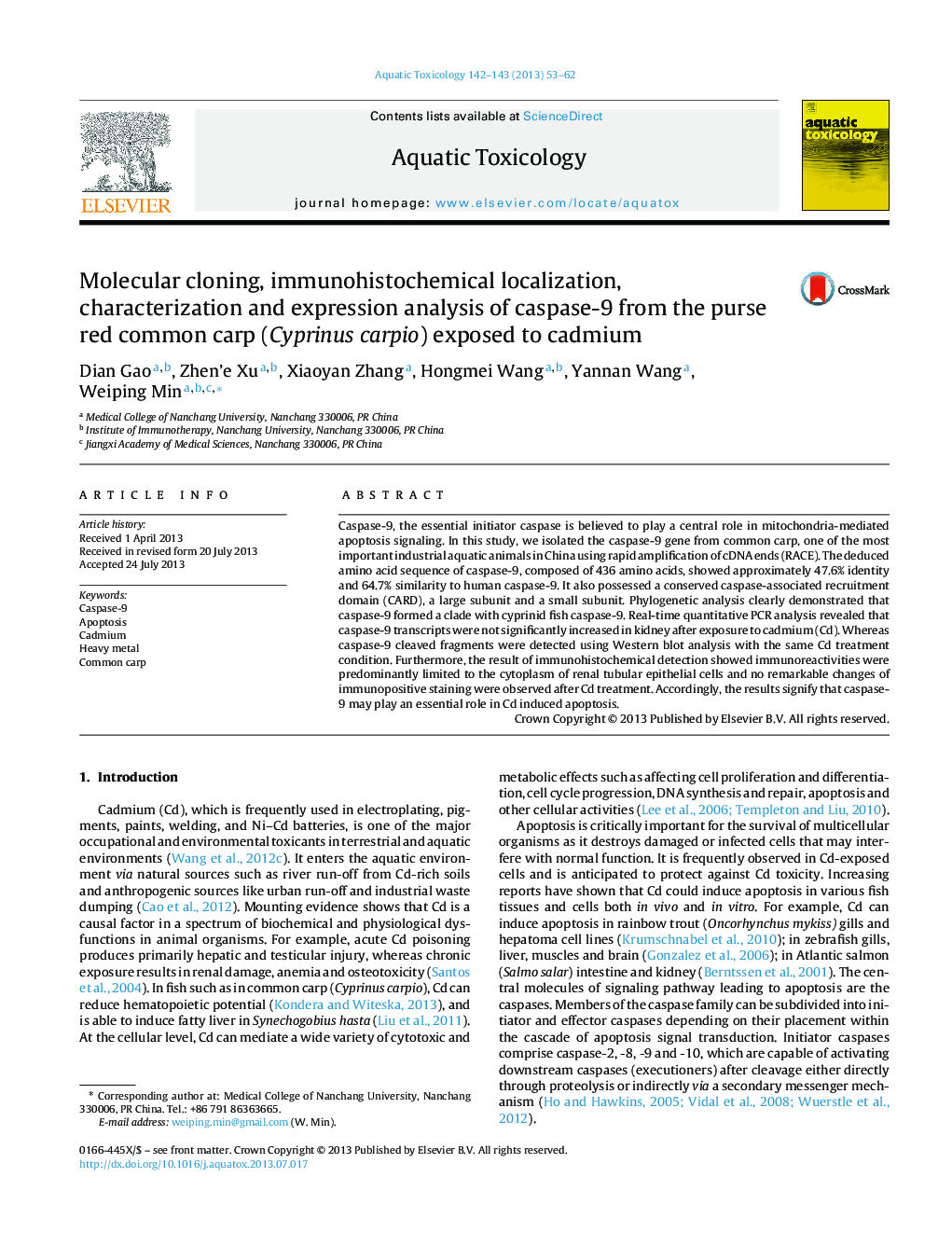| Article ID | Journal | Published Year | Pages | File Type |
|---|---|---|---|---|
| 4529423 | Aquatic Toxicology | 2013 | 10 Pages |
•The cDNA of caspase-9 in common carp was cloned.•The evolutionary conservation including caspase recruitment domain, large and small subunits was clarified.•The mRNA level of caspase-9 cannot be used as a major marker at an earlier point in the apoptotic cascade.•Caspase-9 cleavage form was detected.•Immunopositive staining was limited to the cytoplasm of renal tubular epithelial cells.
Caspase-9, the essential initiator caspase is believed to play a central role in mitochondria-mediated apoptosis signaling. In this study, we isolated the caspase-9 gene from common carp, one of the most important industrial aquatic animals in China using rapid amplification of cDNA ends (RACE). The deduced amino acid sequence of caspase-9, composed of 436 amino acids, showed approximately 47.6% identity and 64.7% similarity to human caspase-9. It also possessed a conserved caspase-associated recruitment domain (CARD), a large subunit and a small subunit. Phylogenetic analysis clearly demonstrated that caspase-9 formed a clade with cyprinid fish caspase-9. Real-time quantitative PCR analysis revealed that caspase-9 transcripts were not significantly increased in kidney after exposure to cadmium (Cd). Whereas caspase-9 cleaved fragments were detected using Western blot analysis with the same Cd treatment condition. Furthermore, the result of immunohistochemical detection showed immunoreactivities were predominantly limited to the cytoplasm of renal tubular epithelial cells and no remarkable changes of immunopositive staining were observed after Cd treatment. Accordingly, the results signify that caspase-9 may play an essential role in Cd induced apoptosis.
